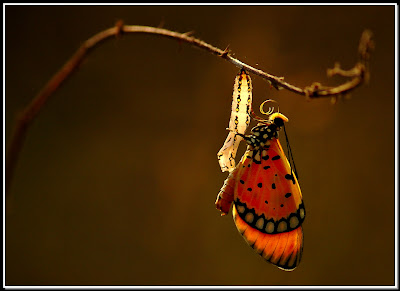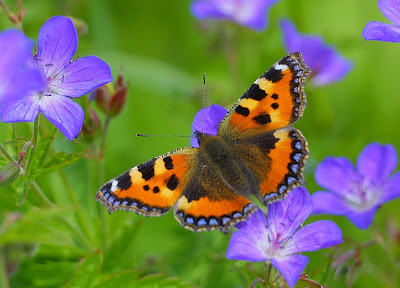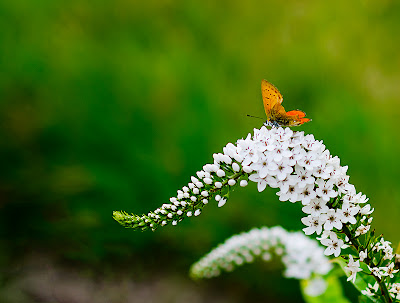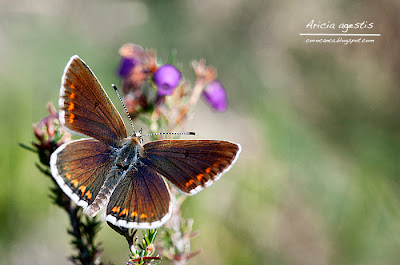Photographing butterflies require expertise in many fields, you should know as much about the subject as possible, habits and behaviors of specific species, know how to approach butterflies without disturbing them and more. You should also have complete mastery over the equipment that you are using, camera, lenses, flash etc. One would only be a true master of butterfly photography when he/she already knows what the butterfly he/she is looking at will do next, has the skill to slowly and fluidly approach the butterfly and does not have to fiddle with all the camera controls once in position. So in order to improve your butterfly photography skills you need to concentrate on all these aspects.
It is very difficult for beginners to get great shots of butterflies as they will be overwhelmed by the demands of the situation and will be lucky if they even get a clear shot of the butterfly. Some general tips to help you get started could be found here:- 14 Tips for Photographing Butterflies.
If you are not sure about how to approach butterflies without scaring them away then you should first go through this post here :- How to Approach Butterflies.
As one gathers experience, most of the things become second nature and that is when you start producing aesthetically pleasing images. The following tips will help you do just that.
Getting your Backgrounds Right
A beautifully blurred background without elements that compete for the viewer’s attention works all the time. Even better if you can find one which is of a colour that works well with that of the butterfly you are photographing.
 |
| Butterfly Photography |
Tips to Blur your Background
- Use a wide aperture:- wider apertures produce shallow depth of field and thus helps blur the background.
- Use a longer focal length lens:– the longer the focal length of the lens you use, the more the blur for any given magnification. It also helps you shoot from a safe distance without scaring away your butterflies thereby exponentially increasing your chances of getting great shots.
- Distance from the subject to the background:– the greater the distance from the subject to the background the greater the blur and vice versa.
- Subject Magnification:– the more magnified the subject appears in the frame in relation to its background the greater the blur and vice versa. Can also be put as Distance from camera to the subject – the closer you are to your subject the greater the blur and vice versa.
Even before you start your approach towards the butterfly look for patches of colours that is suitable, sometimes you could find a flower, a nicely coloured wall or a patch of green vegetation which would all constitute a good background. Remember as the subject you are shooting is small you don’t need a very big surface to act as background, while moving in closer make sure that you have your butterfly and the intended background properly aligned.
When speaking about backgrounds, one other factor to be aware of are small white objects, or clear patches in vegetation through which light shines in the background as these will invariably pull the viewer’s eye towards them in the final picture.
Getting Foregrounds right while photographing butterflies
Pay special attention to what constitutes your foreground; adding foreground elements could give a sense of depth to the scene and would make for an aesthetically pleasing photograph. But unwanted elements like a dead leaf, a twig or any such thing could be a major distraction. While photographing out in the field you could not always expect to have everything in order so carry a small pruning scissor or knife to remove unwanted obstacles which come in front of your lens, without disturbing your subject. If you are photographing in a public garden or similar place, remember the gardeners won’t always approve of people pruning their plants.
Angle of the Butterfly to the Camera
The angle of the butterfly in relation to the camera is one other aspect that requires attention. Since you do not have control neither over the movement of the butterfly nor over the surroundings it choose to land, the only options available are to align your camera as well as possible or simply wait for the butterfly to align itself with your camera. Ideally one would wish to have the butterfly aligned perfectly perpendicular to the cameras sensor, so that most of the butterfly falls in a single plane of focus and thus enabling you to get a really sharp image even shooting wide open at f/4 or f/5.6.
 |
| Photo By Cédric Fayemendy |
However this might not always be the case, many times you will find that the butterfly is at an angle to your camera. in such situations it is good to remember that getting the whole butterfly in perfectly sharp focus will not always be possible so carefully focus on the butterflies eyes and ensure they are sharp and the rest will be fine because if the eyes are sharp, the viewer will accept areas that are out of focus toward the back of the image.
Get a Different Perspective.
Most butterfly photographs we see are shot from one angle, from high above as we look down on them, even though a shot from high above could show the beautiful colours, patterns and texture of the butterfly wings, this is the what he have seen endless times so now it could appear too predictable, too boring. Try finding new angles to shoot from, shoot parallel to the butterfly, or shoot from a lower angle looking up, experiment and you will get fresh, interesting results.
 |
| Photo By Guiss95 |
Rule of Thirds and the Golden Mean
If you are not sure about where to place the butterfly in the frame then the Rule of Thirds and the Golden Mean could serve as good guidelines.
 |
| Photo By Prem Anandh |
Slightly Angle the Butterfly Towards the Corners
Try photographing your butterflies’ angled (facing) towards the corners, this could produce a much more interesting picture than when the butterfly is facing towards the center.
 |
| Photo By Guiss95 |
Look for Leading Lines
Look for Lines created by leaves and stems which could be used to lead the viewer’s eyes towards the subject. Our eyes have this tendency to follow lines when we see them, so look for ways to compose your images in such a way that any lines that appear in the frame lead toward our subject the butterfly.
 |
| Photo By Niels Linneberg |
Leave More Space in the Direction The Butterfly is Facing
 |
| Photo By Carlos Rubio |
Going by the rule of thirds or the golden mean you will be placing your subject slightly off center that means there will be more empty in one direction than the other, compose your shot so that there is more space in the direction the butterfly is looking than the other so that it appears that the butterfly has room to fly and it will be much more appealing to the human brain.
Post a Comment